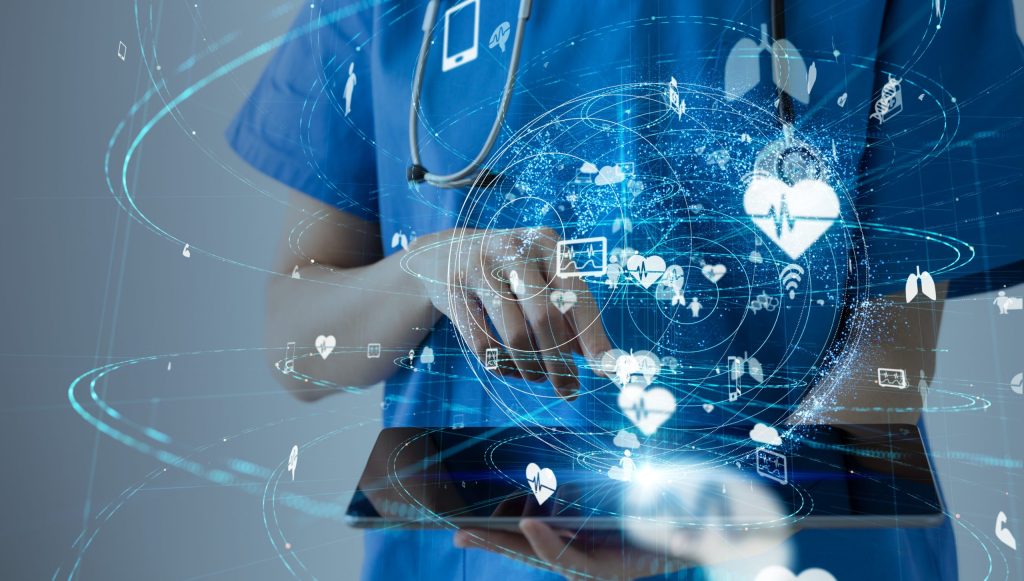Trends in health technology 2025.
Trends in Health Technology: Shaping the Future of Healthcare
Technology has transformed nearly every aspect of our lives, and healthcare is no exception. From the rise of wearable fitness trackers to artificial intelligence diagnosing diseases, health technology is advancing rapidly. These innovations are improving patient care, increasing efficiency, and even saving lives. In this blog, we will explore the key trends in health technology that are revolutionizing the medical field today and paving the way for a healthier tomorrow.

1. Telemedicine: Healthcare Without Boundaries
One of the most significant trends in health technology is the rapid growth of telemedicine. Telemedicine allows patients to consult with doctors remotely using smartphones, tablets, or computers. This became especially vital during the COVID-19 pandemic, where face-to-face appointments were limited.
Benefits of telemedicine include:
-
Easier access for patients in rural or remote areas.
-
Reduced waiting times and travel costs.
-
Safer consultations during outbreaks or emergencies.
Today, many healthcare providers offer virtual consultations for common issues like flu, skin rashes, mental health counseling, and chronic disease management. As internet access improves globally, telemedicine is becoming a more permanent and convenient healthcare solution.
2. Artificial Intelligence (AI) in Diagnosis and Treatment
Artificial Intelligence is no longer science fiction—it’s now a powerful tool in modern medicine. AI algorithms can process vast amounts of medical data and assist in diagnosing diseases like cancer, heart conditions, and neurological disorders.
Some real-world uses of AI in healthcare:
-
Medical imaging analysis: AI can detect abnormalities in X-rays, CT scans, and MRIs more quickly and accurately than the human eye.
-
Predictive analytics: AI can analyze patient histories to predict potential health risks or suggest preventive care.
-
Virtual assistants: AI chatbots and voice assistants can answer medical questions, remind patients about medication, or schedule appointments.
As AI continues to evolve, it is expected to reduce medical errors, speed up treatments, and support healthcare professionals in making informed decisions.
3. Wearable Health Devices and Remote Monitoring
Wearable technology, such as smartwatches and fitness trackers, is growing more advanced every year. These devices monitor health metrics like heart rate, sleep quality, steps, and even blood oxygen levels.
Popular wearable devices include:
-
Apple Watch
-
Fitbit
-
Garmin wearables
-
WHOOP bands
Healthcare providers are now using Remote Patient Monitoring (RPM) to track patients’ health data in real-time. For example, patients with heart conditions can wear a monitor that transmits data to their doctor, allowing immediate intervention if something goes wrong.
Wearables empower people to take control of their health and allow physicians to manage chronic conditions more effectively outside traditional clinical settings.
4. Electronic Health Records (EHRs) and Interoperability
Gone are the days of bulky paper files and handwritten prescriptions. Electronic Health Records (EHRs) have digitized patient information, making it easier for healthcare professionals to access and share data securely.
Benefits of EHRs include:
-
Streamlined patient histories
-
Fewer medical errors
-
Better coordination between multiple healthcare providers
-
Faster diagnoses and treatment plans
A current challenge is interoperability—ensuring different healthcare systems and software can communicate with each other. When interoperability improves, patients can receive seamless care even if they visit multiple clinics or specialists.
5. Robotics in Surgery and Patient Care
Robotic technology is no longer limited to science labs. Today, robots assist surgeons in performing delicate procedures with high precision. Robotic-assisted surgery allows for:
-
Smaller incisions
-
Less blood loss
-
Shorter hospital stays
-
Faster recovery
One leading example is the Da Vinci Surgical System, used in surgeries for cancer, urology, and gynecology.
Apart from surgery, robots are also being developed to:
-
Help elderly patients with mobility and reminders
-
Assist nurses in lifting or transporting patients
-
Disinfect hospital rooms with UV light
The integration of robotics is making healthcare more efficient, accurate, and safe.
6. Mental Health Tech and Digital Therapeutics
Mental health is finally gaining the attention it deserves, and technology is playing a key role. With rising cases of anxiety, depression, and stress, digital solutions are stepping in to fill the gaps in mental health care.
Some examples include:
-
Mental health apps like Headspace, Calm, and BetterHelp
-
Chatbots for emotional support (like Woebot)
-
Online therapy platforms connecting users to licensed professionals
-
VR therapy for PTSD, anxiety, or phobias
Digital therapeutics are evidence-based software programs that treat or manage psychological and neurological conditions. These technologies are accessible, private, and helpful for people who might not seek traditional therapy.
7. Personalized Medicine and Genomics
Every individual is unique, and now, healthcare is catching up with this fact. Personalized medicine uses genetic information to tailor treatments specific to an individual’s DNA.
This is made possible through:
-
Genomic sequencing: Mapping a person’s genome to identify disease risks
-
Pharmacogenomics: Understanding how a person responds to different medications
-
Precision oncology: Developing cancer treatments based on a patient’s genetic makeup
By customizing treatments, doctors can improve outcomes and reduce side effects. As DNA testing becomes more affordable, personalized medicine is expected to become mainstream.
8. Blockchain for Data Security in Healthcare
Healthcare data is sensitive and must be kept secure. Blockchain technology offers a decentralized and secure way to store and share medical records.
Advantages of blockchain in healthcare:
-
Improved data privacy
-
Easier sharing of medical records with consent
-
Reduced fraud in clinical trials and insurance
-
Enhanced supply chain tracking for medications
While still in its early stages, blockchain has the potential to strengthen trust and transparency in healthcare systems worldwide.
9. 3D Printing in Medicine
3D printing is changing the way medical devices and treatments are created. Using 3D printers, healthcare professionals can produce:
-
Custom prosthetics and implants
-
Dental devices
-
Surgical tools
-
Anatomical models for training or surgery planning
In some cutting-edge research, scientists are even exploring bioprinting, where 3D printers use cells to create tissues and organs. While full organ printing is still a long way off, the potential is truly revolutionary.
10. Augmented Reality (AR) and Virtual Reality (VR)
AR and VR are gaining traction in healthcare education, surgery, and therapy. These technologies are being used to:
-
Train medical students with lifelike simulations
-
Help surgeons visualize procedures before they operate
-
Offer immersive therapy for mental health, stroke rehabilitation, or pain management
For instance, patients recovering from a stroke may use VR to regain motor skills in a fun and interactive environment.
Conclusion
The healthcare industry is being transformed by technology in ways that were unimaginable just a few decades ago. From AI-powered diagnostics to wearable monitors, from virtual therapy to robotic surgery—health technology is improving lives across the globe.
These innovations are not just making healthcare more advanced, but also more accessible, personalized, and efficient. As these trends continue to evolve, the future of healthcare looks brighter, smarter, and healthier for everyone.
